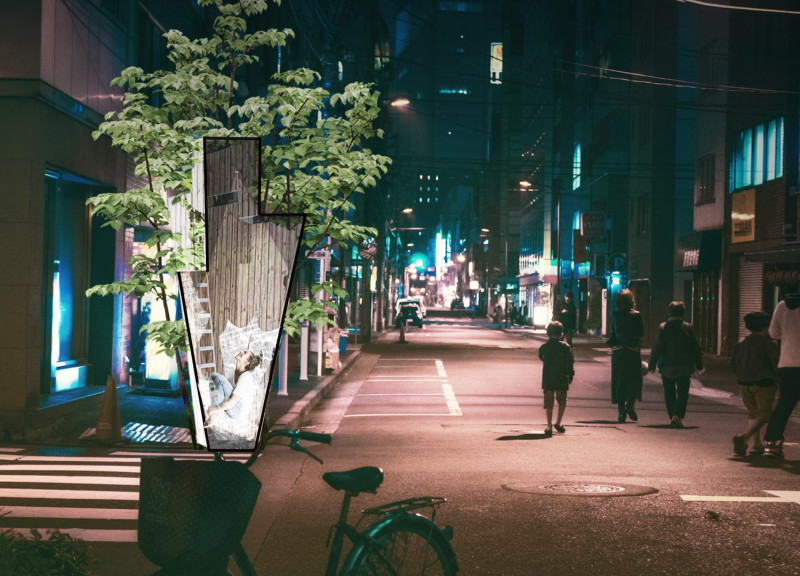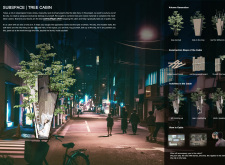5 key facts about this project
"Subspace | Tree Cabin" offers a unique retreat in the heart of Tokyo's bustling urban landscape. This project aims to provide a quiet space for individuals looking to escape the pressures of city life, which is often marked by high-rise buildings and a feeling of constant activity. The design focuses on creating a personal sanctuary that connects with nature, encouraging moments of reflection and calm.
Conceptual Integration
The cabin is designed to blend into its surroundings. Using branches and leaves as natural camouflage, it gradually fades from view, providing privacy for its occupants. This approach not only enhances tranquility but also emphasizes the relationship between the structure and the environment. The aim is to create a feeling of safety and retreat amidst the noise and chaos of city living.
Spatial Experience
Inside, the layout invites various forms of engagement. Users can sit and gaze at the sky, meditate in a focused posture, or climb to look out at the surrounding nature. Each of these activities supports a deeper connection with the environment. The design encourages slowing down, allowing a space for contemplation that contrasts with the fast pace outside.
Material Considerations
Wood is a primary material used in the cabin, chosen for its natural warmth and ability to resonate with the outdoor setting. The wood walls create a comforting interior while allowing the space to feel grounded. Soft fabric elements are included to increase comfort, making the cabin a cozy place for relaxation and meditation.
Design Details
From within, the cabin offers peaceful views of the sky, framed by leaves, and the graceful movement of birds. The gentle sound of raindrops creates a calming atmosphere. These aspects contribute to a sensory experience that encourages mindfulness. The design ultimately serves as a reminder of the beauty and serenity that nature can offer, providing a much-needed escape in an urban environment.



















































